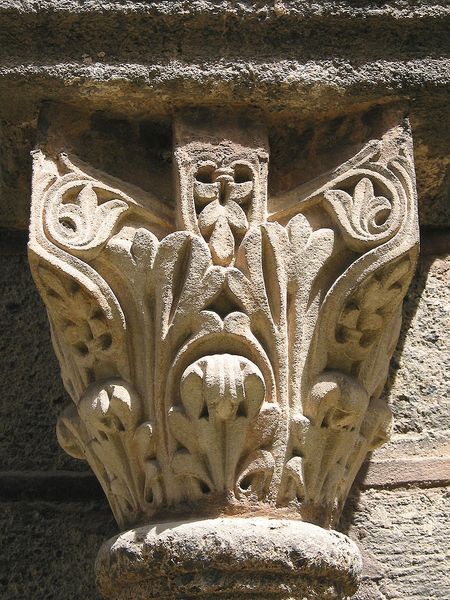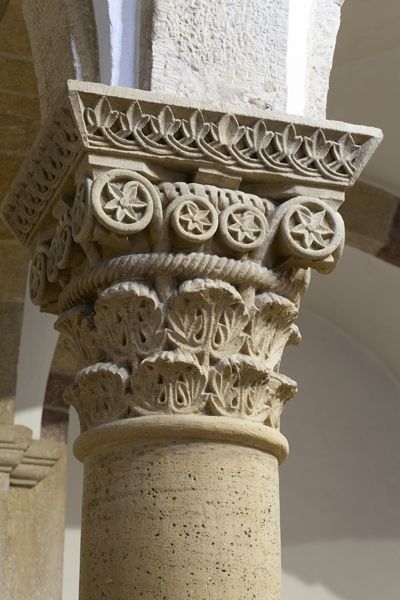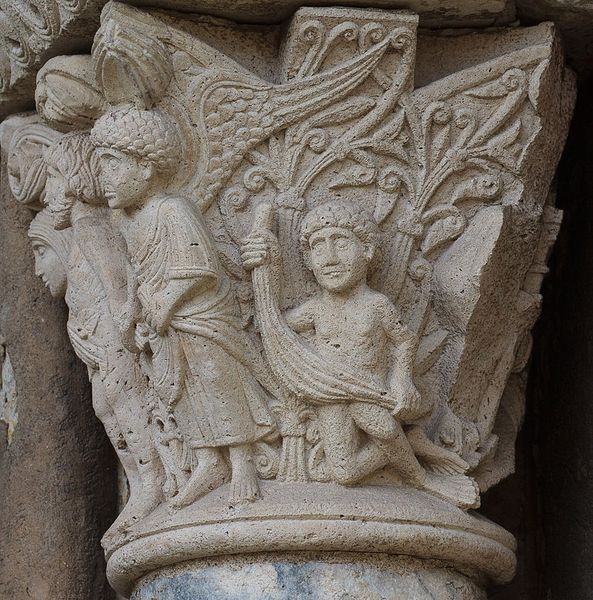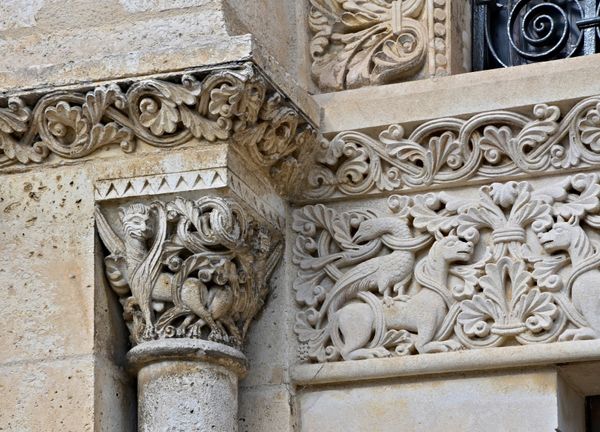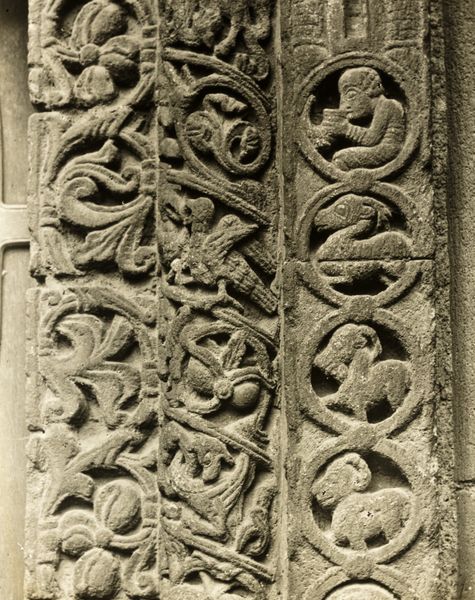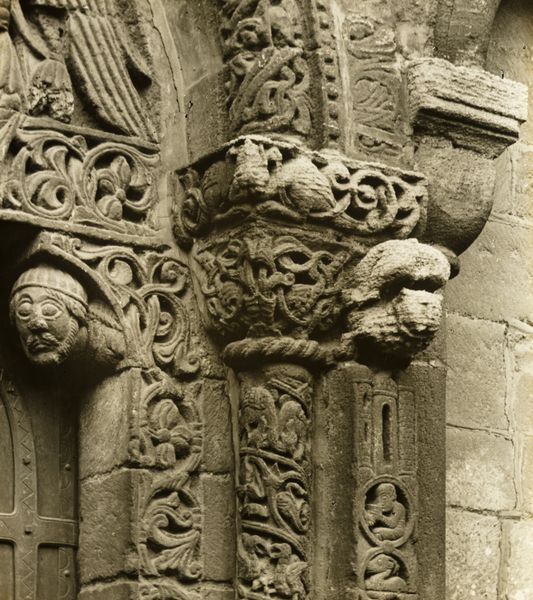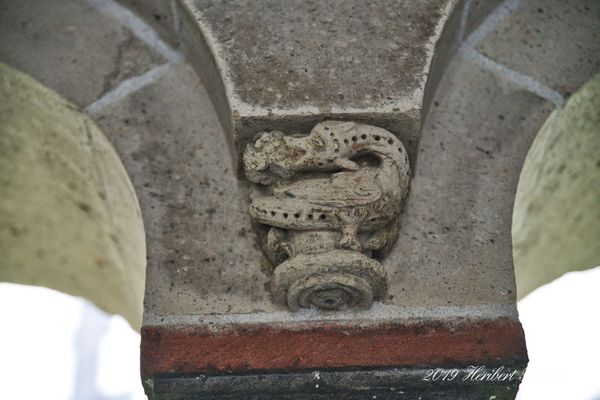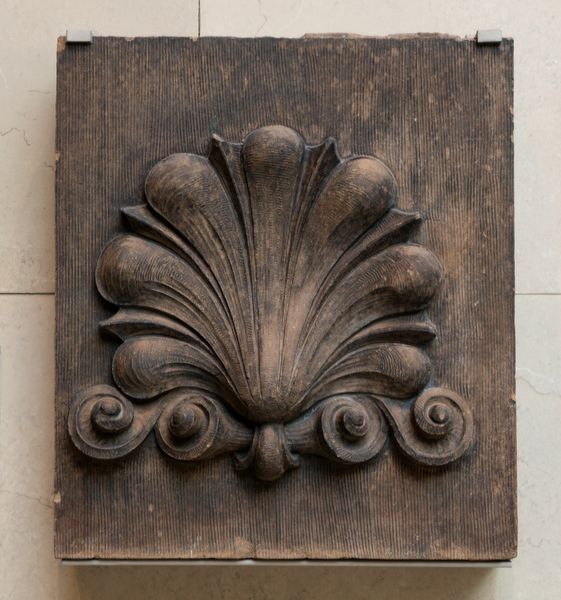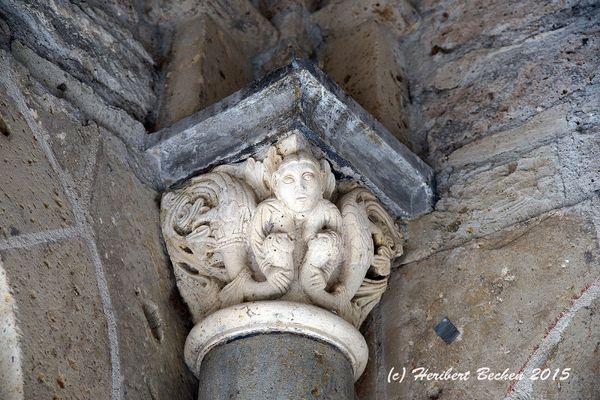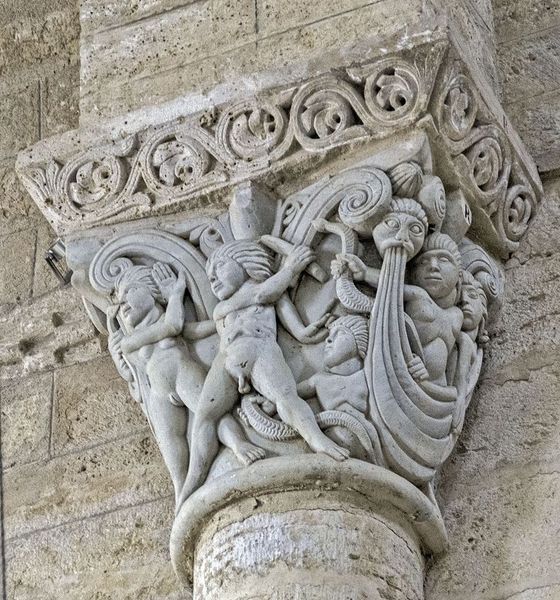
carving, sculpture, marble, architecture
#
medieval
#
carving
#
sculpture
#
holy-places
#
historic architecture
#
traditional architecture
#
romanesque
#
column
#
sculpture
#
marble
#
architecture
Copyright: Public domain
Curator: Here we have a capital from Maria Laach Abbey in Germany, dating back to 1093. It’s a beautiful example of Romanesque carving. Editor: It’s so tactile. I’m immediately drawn to the repetitive, almost hypnotic carvings. A series of abstracting floral and geometrical ornaments encircle it, a series of concentrated symbolism at the top of a heavy column. Curator: Indeed, the Maria Laach Abbey played a significant role in the Hirsau Reforms, which sought to restore monastic life to its purest form. The architecture and ornamentation reflected that, expressing both faith and power. This capital is a potent demonstration of how art was enlisted for religious reform and renewed monastic power. Editor: Looking at the sculpted vegetation and wheel-like rosettes, I see how easily pagan imagery integrated with Christian meaning in this period. The rosette in particular, appearing like sun wheels, speaks to cosmic harmony. These early monastic decorations drew heavily on indigenous pre-Christian culture. The Church absorbed existing symbols, adding new layers of meaning to increase conversion among the population. Curator: Absolutely. The visual language in the architecture provided the monks and pilgrims alike with something that was simultaneously new and familiar, creating accessibility that encouraged engagement. And the craftsmanship clearly conveyed authority and enduring permanence of the institution. The Abbey was rebuilt at that time in stone as an enduring symbol of both temporal and spiritual power. Editor: Considering the overall architecture and purpose of this building, these elements must have made a great psychological impression. Even small symbolic touches carry significance and power that is greatly increased within a huge stone temple. One could easily see a visual motif, such as one of these repeated stylized blossoms, and meditate on the greater concept of harmony that they might represent. Curator: Certainly. These weren’t merely decorative elements, but integral pieces of a grander narrative, teaching tenets of faith through iconography while asserting stability via durable material. Editor: I hadn’t considered the political weight that such a small portion of such a large architectural structure could convey. Thank you. Curator: A vital reminder of how art played a critical role in the dynamics of religion and authority in medieval society.
Comments
No comments
Be the first to comment and join the conversation on the ultimate creative platform.
